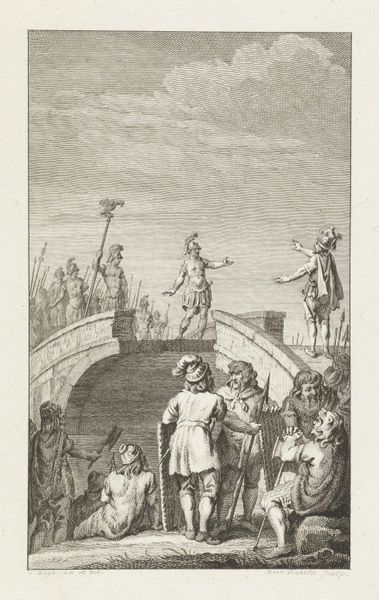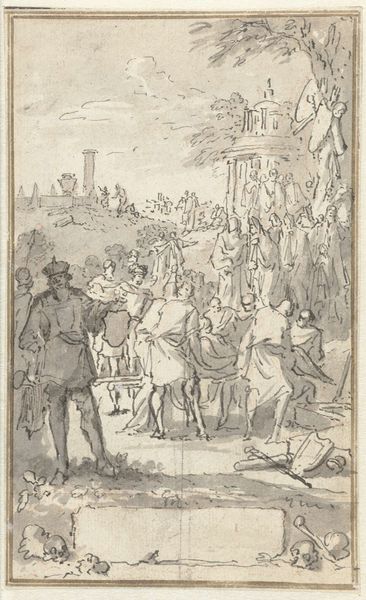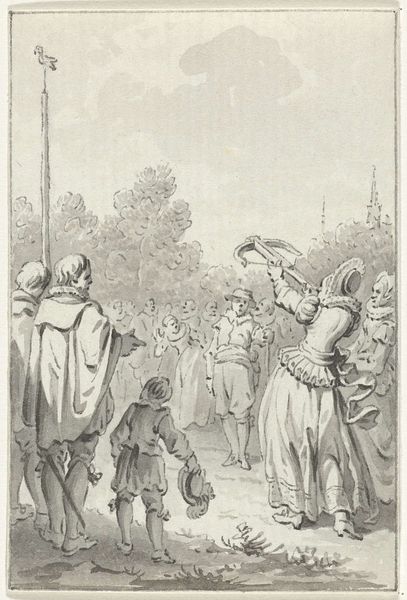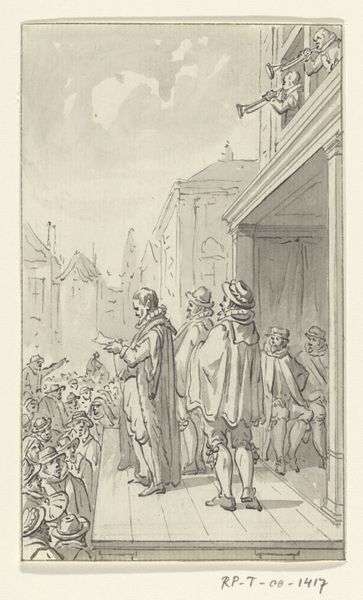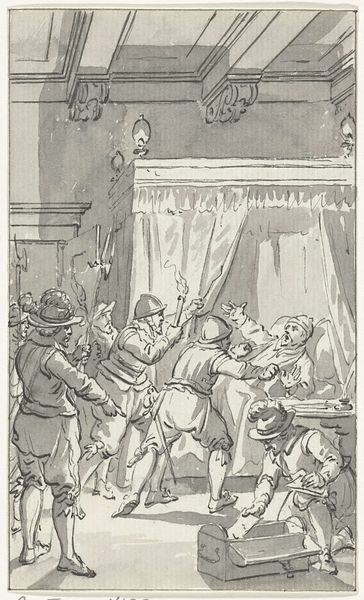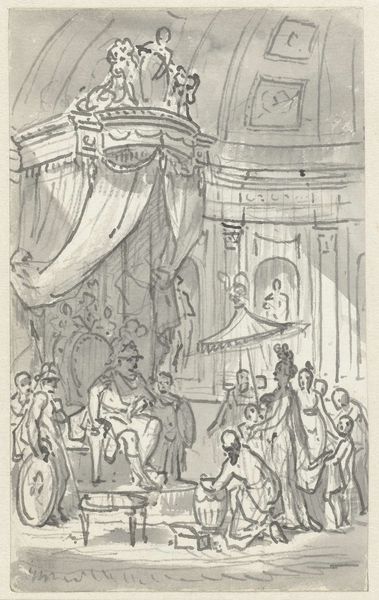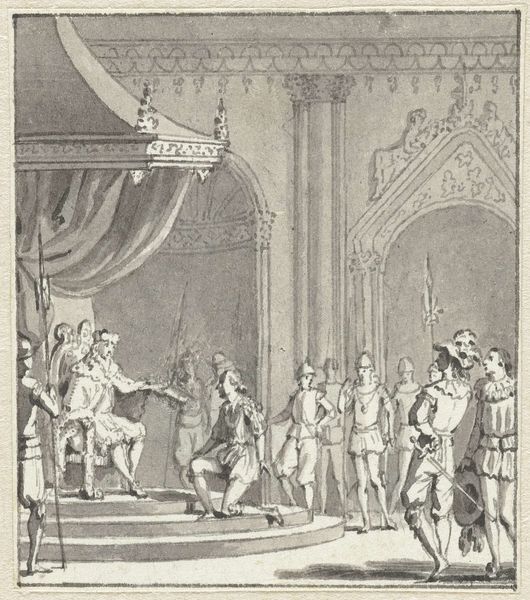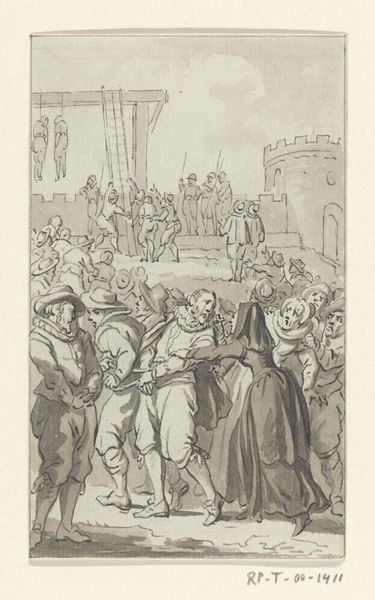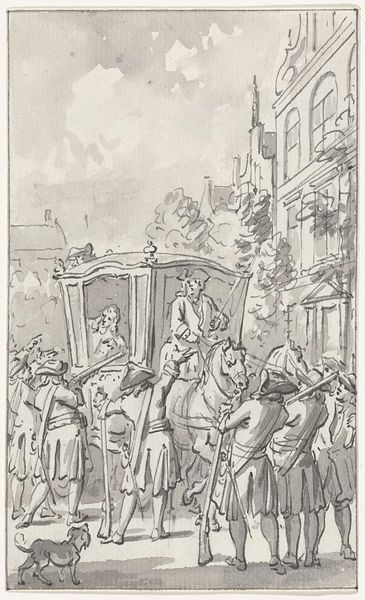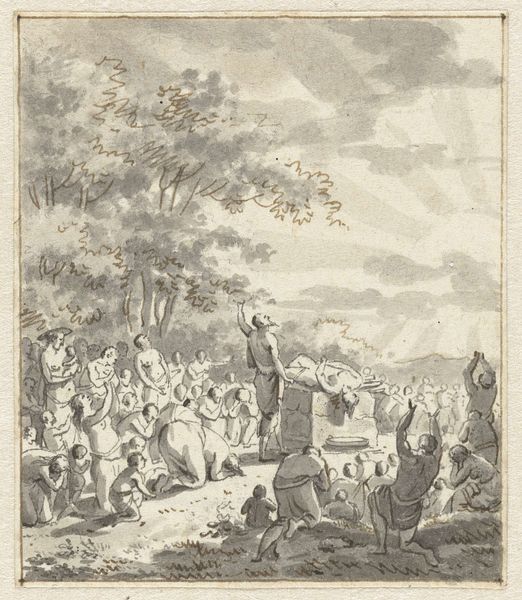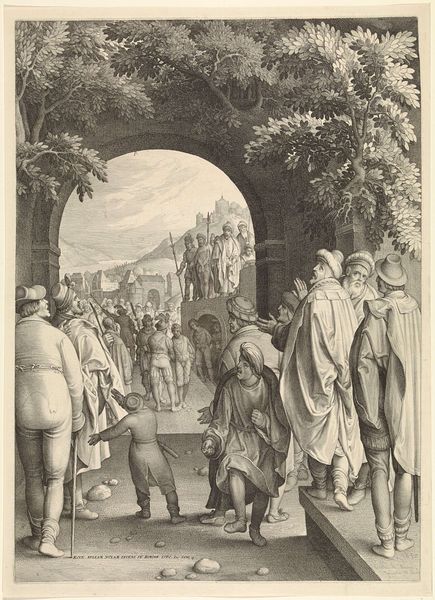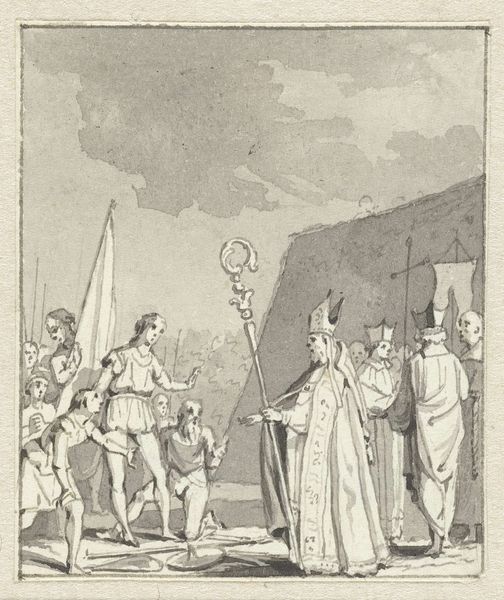
Vredesonderhandelingen tussen Claudius Civilis en Petilius Cerealis op de afgebroken brug, 70 1779 - 1784
0:00
0:00
jacobusbuys
Rijksmuseum
drawing, ink
#
drawing
#
neoclacissism
#
pen illustration
#
ink
#
classicism
#
15_18th-century
#
history-painting
#
academic-art
Dimensions: height 148 mm, width 90 mm
Copyright: Rijks Museum: Open Domain
Editor: This drawing by Jacobus Buys, made between 1779 and 1784, is rendered in ink. It depicts the peace negotiations between Claudius Civilis and Petilius Cerealis. The whole scene has such a deliberate quality, despite the rawness of the ink. What’s your perspective on this piece? Curator: Considering Buys was working in the late 18th century, it's vital to understand the socio-political landscape, how materials like ink and paper were circulated, and the labor involved in creating these historical images for a growing public. This was the dawn of mass media, wasn’t it? Editor: Mass media through ink drawings? Curator: Exactly. Ink allowed for reproduction and distribution, even before photography. It democratized access to history. Look at the broken bridge. That physical disruption signifies a disruption of power dynamics. How did such images influence Dutch national identity and the understanding of their Roman past, consumed through prints and illustrated books? Editor: I hadn't thought of the bridge as symbolizing a power shift, but more as a literal barrier overcome. It makes me think, who was commissioning this work? Curator: That's crucial. Patronage dictated content and dissemination. Exploring that economic relationship unveils another layer of meaning beyond the heroic narrative. Whose story is truly being told through this deliberate manipulation of ink on paper? Editor: I guess it’s easy to forget the hand of the artist – and those behind him – when viewing something historical. Curator: Precisely. Thinking about art as a product of specific material conditions and labor reveals deeper, often overlooked, narratives embedded within seemingly straightforward historical depictions. We need to ask ourselves, how much did it cost, who benefitted, what stories weren't recorded because they couldn't afford the materials? Editor: That perspective gives this drawing a new complexity. I’m going to look for those untold narratives in the visible choices from now on.
Comments
No comments
Be the first to comment and join the conversation on the ultimate creative platform.

